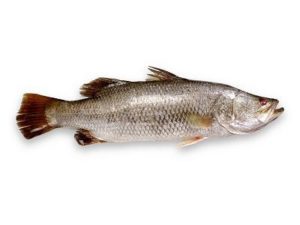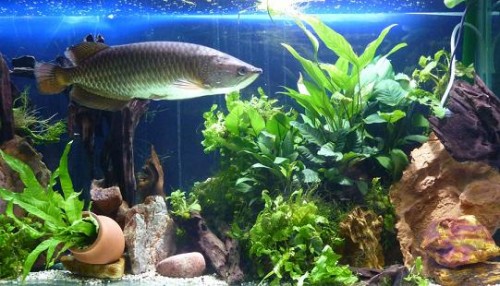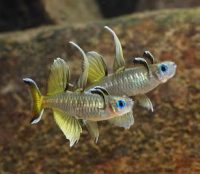Natives

Australian native fish including New Guinea Rainbow fish represent a large and diverse group found in local waters. These fish inhabit a range of environments from freshwater to brackish water conditions and temperate species suitable for cold water tanks. Most species are easy to keep and fairly tolerant of varying water quality, although in general they prefer neutral to slightly alkaline pH. They will generally accept most aquarium foods, and often benefit from frozen or live foods.
As many of these fish are wild caught, supplies are generally seasonal with shortages sometimes occurring over the winter.
Things you might need
- Large Fish Tank
- Food – flakes, pellets and live or frozen food
- Pet City Water Conditioner
- Pet City Purer Water
- PH Test Kit
- Neutraliser Blocks
- Filter
- Gravel Cleaner
- Rocks/Plants
- Decorations/Ornaments/Backgrounds
- Aqua Salt
- Fish Net

About Natives
Popular native fish include Barramundi, Cod, Rainbowfish, Gudgeons, Saratogas and Tandanus Catfish. It should be noted that Cod, Barramundi and other large species are predatory species and will eat other fish, particularly as they grow and may not be suitable for a general community tank. Other species such as the Blue-eyes can be a great addition to a community tank or pond.

Barramundi – barramundi are natives that prefer live food (feeder fish, earthworms or yabbies), but can easily be trained to accept pieces of meat or frozen prawns. When raised in aquaculture ponds, barramundi are trained to eat a dry diet of pellets. Suitable for community tanks providing it is kept with fish about its own size.

Harvey Creek Blue-eye – the Harvey Creek Blue-eye is one of the larger forms of Pacific Blue-eye, growing to about 7cm. It is an active showy fish, preferring plenty of open swimming space. Best kept in a small group with similar sized community fish, it is quite hardy and is not fussy about diet or water conditions. Males develop very long dorsal and anal fins. Pacific Blue-eyes from northern Queensland prefer water temperatures of at least 19 C.

Pacific Blue-eye – Pacific Blue-eyes are found in freshwater and brackish habitats along most of Australia’s Pacific coastline. They are good community fish; active, peaceful and are not fussy about water conditions or diet. Blue-eyes look their best when kept as a small group in planted aquariums with similar sized tankmates. Pacific Blue-eyes are also good for mosquito control in frog ponds (provided winter water temperatures are usually above 13 C.) Maximum size 4cm.

Golden Eeltail – Also known as Hyrtl’s Tandan, the Golden Eeltail is an active schooling catfish native to northern Australia. It is suitable for community aquariums, particularly with medium to large fish, (large Golden Eeltails may occasionally eat small tetra sized fish.) These catfish are easy to care for, accepting most water conditions and foods. They appreciate occasional feedings of blackworm or bloodworm. Golden Eeltails can grow to 20cm, but usually remain smaller.

Tandanus Catfish – a very popular and hardy native catfish suitable for both heated and unheated aquaria. Grows to 60cm, usually significantly smaller in aquaria. Large specimens may eat small fish.
Like all Australian eel-tail catfishes, these natives require you to handle them with care, the dorsal and pectoral spines are capable of inflicting a painful wound.

Sleepy Cod – the Sleepy Cod is a large species of Gudgeon from northern Australia, it inhabits slow flowing areas where it preys on crustaceans and small fish. It is a very hardy and undemanding fish and can become very tame. Sleepy Cod have big appetites and have been known to attempt to eat fish half their own size, so ensure tankmates are at least of similar size, if not larger. Sleepy Cod occasionally grow to 45cm, but are usually much smaller.

Sooty Grunter – a well-known angling fish across northern Australia, the Sooty Grunter also makes a great aquarium pet, becoming very tame and responsive. They are very easy to keep, but can be aggressive. Best kept with other large robust species with plenty of hiding places (rocks, driftwood etc). Sooty Grunter can grow to 45cm, but more commonly grow to half that size. They prefer bulky foods such as pellets, yabbies and small fish.

Northern Purple Spotted Gudgeons – a wide spread species, with a number of geographic variations which can differ in colour and size. Prefers chunky live or frozen foods, but will also learn to eat pellets. Do not keep with smaller fish or long finned fish, as the gudgeons may eat or nip them. Ensure the aquarium is well covered as this fish is an excellent jumper. Grows to 10-15cm.

Gulf Saratoga Jardini – Australia’s two Saratoga species are both impressive looking fish, highly valued as display specimens. Larger fish are best kept on their own, ensure the aquarium is covered as they are expert jumpers. Prefers live foods such as small fish, yabbies and crickets. The majority of Jardini (Gulf Saratoga) supplied to the aquarium trade is wild caught, and can be irregular in supply depending on conditions in the wild. In nature it commonly grows to 55cm.

Silver or Red Scat – Scats are distinctive deep-bodied fish, found in coastal regions of northern and eastern Australia. Very good aquarium fish, they accept most water conditions except for soft acidic water. They are not fussy about diet and have very healthy appetites; very small specimens (<3cm) should be fed often. They can grow to 25cm or more, but are usually much smaller in aquaria.

Silver Mono Argent – this distinctive diamond-shaped fish is native to the indo-Pacific region, including northern Australia. Inhabits marine, brackish and sometimes freshwater habitats. A peaceful schooling species which prefers some salt added to the water.
